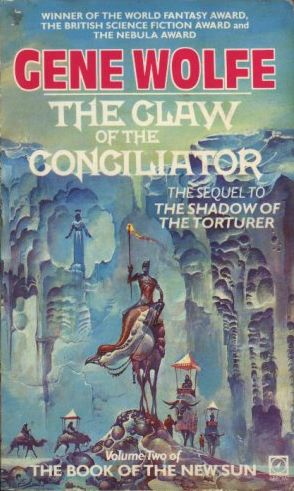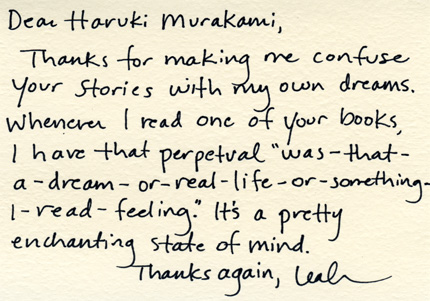These days I’m reading Gene Wolfe, who’s so esoteric that I could as well define him an “occultist”. Without any relation to this, though, I found a very old book in my house on my father’s book shelves. Four volumes and a total of 1600 pages.
It’s pretty much the same thing (as Wolfe).
Looking up the writer (a she), I found out a huge collection of her works, available online, directly linked on the wikipedia. Talking here about Helena Petrovna Blavatsky. The other bigger works of her is aptly defined (and titled: The Secret Doctrine):
Blavatsky’s masterwork on theosophy, covering cosmic, planetary, and human evolution, as well as science, religion, and mythology.
A bit like Gene Wolfe’s Solar Cycle, only that she intended to write it not as fiction.
The interesting part is that she’s an occultist that engages upfront with “science” and gives it her own interpretation by embracing, instead of ignoring, scientific progress. So, instead of separating the disciplines, she tries to unify them, find things in common, leading to a model that should be coherent on the whole.
Being these texts about 120-130 years old and filled with very bold and definite claims (and predictions), it’s interesting to read them today to see how (if) they hold up. Her fundamental idea is that ancient texts and cultures had a near perfect knowledge of the world, and science is only re-discovering what occultists already knew for a very long time. Eventually they’ll meet at the end. So, as an occultist, she knows the “truth”, and in this book she examines all kinds of scientific theories of her time, pointing out how they all seem to move in a specific direction.
For example on the wikipedia it’s written that she claimed the “atom was divisible”, and today we can confirm this as a “truth”. Science agrees. So it’s interesting to analyze how many of her occultist ideas were actually confirmed and if her “insight” actually had some worth (or if her predictions were merely fortuitous). The real problem is that I’m not a scientist and so not competent enough to say what worked and what didn’t.
Take this for example (a section titled “Life, force, or gravity” almost like a Bakker’s wip):
The imponderable fluids have had their day; “mechanical Forces” are less talked about; Science has put on a new face for this last quarter of a century; but gravitation has remained, owing its life to new combinations after the old ones had nearly killed it. It may answer scientific hypotheses very well, but the question is whether it answers as well to truth, and represents a fact in nature. Attraction by itself is not sufficient to explain merely planetary motion; how can it presume to explain the rotatory motion in the infinitudes of Space? Attraction alone will never fill all the gaps, unless a special impulse is admitted for every sidereal body, and the rotation of every planet with its satellites is shown to be due to some one cause combined with attraction. And even then, says an astronomer (“Philosophie Naturelle,” art. 142), Science would have to name that cause.
Occultism has named it for ages, and so have all the ancient philosophers; but then all such beliefs are now proclaimed exploded superstitions. The “extra cosmic” God has killed every possibility of belief in intra cosmic intelligent Forces, yet who, or what is the original pusher in that motion? “When we have learned the cause, unique et speciale, that pushes, we will be ready to combine it with the one which attracts,” says Francoeur (“Astronomie,” p. 342). And again — “Attraction between the celestial bodies is only repulsion: it is the Sun that drives them incessantly onward; for otherwise, their motion would stop.”
I don’t know exactly what science believes today, but the idea of “God” shared by Kabbalists and occultists is rather close to the idea of “nature” that is given by science. God is not manipulating the world, but the complex rules that drive it (the world) were set in motion at the very beginning. So the god doesn’t intervene, as his creation is already as perfect as it can be, moving along its purpose. It’s a matter of semantic, since science tells us exactly the same. That the world follows a complex (and fixed) system of rules to be discovered.
And especially, there are scientific ideas that “reverse engineer” the approach to science, leading back right to occultism. For example: the anthropic principle. Which is built on certain “obligatory” deductions that just can’t be escaped.
One way to cling to non-magic/spiritual scientific belief and explain at the same time the anthropic principle is suggested by Sean M. Carroll, the cosmologist I found out via Fringe. So a scientist of today who knows well at what point science is, and so tries to explore new theories built on modern knowledge. He theorizes that the reason why entropy builds constantly in our universe, from the Big Bang to its future collapse, so from an absolute minimum to a maximum, is only possible because this universe is part of a much bigger multiverse, where a number of self-contained universes develop at the same “time”.
The example he uses to simplify this idea is extremely straightforward. Think of an egg. This egg is an organized system, very low on entropy. The moment we make this egg fall on the ground and shatter its entropy increases. To the point that the process can’t be inverted (you can’t rebuild the egg once it broke, it’s way too complex, an effort too great). So this egg-system is one starting from very low entropy, and moving toward high entropy. But the egg also exist as part of our universe, that itself is going through the same process, from low entropy (Big Bang) to high entropy (final collapse). Repeat the pattern and you can easily theorize that our whole universe ALSO is only a smaller system contained in a bigger one. And so we could explain that our system/universe entropy is only absolute to itself, but relative in the grander scheme of things.
This then also explains the anthropic principle, as it theorizes that we are only one of infinite possible observers. Essentially, the only way science has to deny god on this level is about: “in a sufficiently large universe, some worlds might evolve conscious life regardless of adverse conditions”. And having a multiverse of universes is the working possibility to have this necessity of context larger than our own finite universe.
My point is that no matter the scientific progress, occultism is merely flowing into the gaps, and linger there. It’s as if scientific progress moves onward, but never gets closer to a definite truth. More often than not the fundamental questions only shift their context, but those questions are never answered.
So its interesting to read these old occultist text not for truth, but because while some parts appear as ridiculous in light of modern progress, some other parts come back and are as actual as ever. Giving the illusion that science and occultism are describing the same object seen from two specular perspectives:

And this would be indeed occultism’s triumph over science:
Occultism, which knows of the existence and presence in Nature of the One eternal element at the first differentiation of which the roots of the tree of life are periodically struck, needs no scientific proofs. It says: — Ancient Wisdom has solved the problem ages ago. Aye; earnest, as well as mocking reader, Science is slowly but as surely approaching our domains of the Occult.
And, especially:
There can be no possible conflict between the teachings of occult and so-called exact Science, where the conclusions of the latter are grounded on a substratum of unassailable fact. It is only when its more ardent exponents, over-stepping the limits of observed phenomena in order to penetrate into the arcana of Being, attempt to wrench the formation of Kosmos and its living Forces from Spirit, and attribute all to blind matter, that the Occultists claim the right to dispute and call in question their theories. Science cannot, owing to the very nature of things, unveil the mystery of the universe around us. Science can, it is true, collect, classify, and generalize upon phenomena; but the occultist, arguing from admitted metaphysical data, declares that the daring explorer, who would probe the inmost secrets of Nature, must transcend the narrow limitations of sense, and transfer his consciousness into the region of noumena and the sphere of primal causes. To effect this, he must develop faculties which are absolutely dormant
Well said, but still not granted or proven. One way or the other. We know our limits and little else.
Another intresting idea I read is about the “Aether”. In occultism given for granted as a substance that is everywhere. Now this is an outlandish idea that today appears as completely ridiculous, yet, when we push science to its newfound limits, it seems to return. See quantum foam:
The foam is supposed to be the foundations of the fabric of the universe
Quantum mechanics can be used to describe spacetime as being “bitty” at extremely small scales
Instead of being “smooth”, the vacuum is described as looking like “quantum foam”. It has been suggested that this seething mass of virtual particles may be the equivalent in modern physics of a particulate aether.
It turns out that such matter exists. About the time relativity was becoming accepted, studies of radioactivity began showing that the empty vacuum of space had spectroscopic structure similar to that of ordinary quantum solids and fluids. Subsequent studies with large particle accelerators have now led us to understand that space is more like a piece of window glass than ideal Newtonian emptiness. It is filled with ‘stuff’ that is normally transparent but can be made visible by hitting it sufficiently hard to knock out a part. The modern concept of the vacuum of space, confirmed every day by experiment, is a relativistic ether. But we do not call it this because it is taboo.
And so sometimes it does feel like science is a very large detour leading to the same point. Strict scientific language seems to obfuscate and distract from the truth, as if the model was inverted and occultist language was not esoteric, but revelatory. Though occultist ideas require quite a bit of work to adapt to scientific knowledge. The occultist perspective:
What several rather mystical Scientists taught was that light, heat, magnetism, electricity and gravity, etc., were not the final causes of the visible phenomena, including planetary motion, but themselves the Secondary effects of other Causes, for which Science in our day cares very little, but in which Occultism believes, for the Occultists have exhibited proofs of the validity of their claims in every age. And in what age were there no Occultists and no Adepts?
Sir Isaac Newton held to the Pythagorean corpuscular theory, and was also inclined to admit its consequences; which made the Count de Maistre hope, at one time, that Newton would ultimately lead Science back to the recognition of the fact that Forces and the Celestial bodies were propelled and guided by Intelligences (Soirees, vol. ii.). But de Maistre counted without his host. The innermost thoughts and ideas of Newton were perverted, and of his great mathematical learning only the mere physical husk was turned to account.
[…]
This “mystery,” or the origin of the life essence, Occultism locates in the same centre as the nucleus of prima materia (for they are one) of our Solar system.
“The Sun is the heart of the Solar World (System) and its brain is hidden behind the (visible) Sun. From thence, sensation is radiated into every nerve-centre of the great body, and the waves of the life-essence flow into each artery and vein. . . . The planets are its limbs and pulses. . . .” (Commentary.)
It was stated elsewhere (in the Theosophist) that Occult philosophy denies that the Sun is a globe in combustion, but defines it simply as a world, a glowing sphere, the real Sun being hidden behind, and the visible being only its reflection, its shell. The Nasmyth willow leaves, mistaken by Sir J. Herschell for “Solar inhabitants,” are the reservoirs of solar vital energy, “the vital electricity that feeds the whole system. . . . . The Sun in abscondito being thus the storehouse of our little Kosmos, self-generating its vital fluid, and ever receiving as much as it gives out,” and the visible Sun only a window cut into the real Solar palace and presence, which reflects, however, faithfully the interior work.
This, Science will not deny, since Astronomy knows of the fixed cycle of eleven years when the number of solar spots increases,* which is due to the contraction of the Solar heart. The universe (our world in this case) breathes, just as man and every living creature, plant, and even mineral does upon the earth; and as our globe itself breathes every twenty-four hours.
If ever this theory of the Sun-Force being the primal cause of all life on earth and motion in heaven is accepted, and if that other far bolder one of Herschell — about certain organisms in the Sun — is accepted even as a provisional hypothesis, then will our teachings be vindicated, and esoteric allegory shown to have anticipated Modern Science by millions of years, probably, for these are the Archaic teachings.
[…]
The whole range of physical phenomena proceed from the Primary of Ether — Akasa, as dual-natured Akasa proceeds from undifferentiated Chaos, so-called, the latter being the primary aspect of Mulaprakriti, the root-matter and the first abstract Idea one can form of Parabrahmam. Modern Science may divide its hypothetically conceived ether in as many ways as it likes; the real AEther of Space will remain as it is throughout.
And so this pervasive “substance” that in quantum theory composes the fabric of the universe, is more or less similarly described in occultism. “Bitty”. Described through allegory as “organisms” that keep the universe moving and that make life possible.
Put away semantic differences, and they are pretty much descriptions of the same “object”. One factual, the other anthropomorphic.
(I was thinking of the image of connected panels that show the illusion of a sky. You look up and see the sky as if it was a real one. But if you dislocate one of the panels from its original position, then you’d suddenly perceive a “hole” (I was thinking about this because I was watching the anime Rahxephon, using similar imagery, but even Portal the game does something similar). Something like this “quantum foam”, that is transparent and intangible (ideally), but as the fabric of the universe, it shows only if dislocated. Showing the “illusion” below and appearing as “bitty”. So… digital?)







